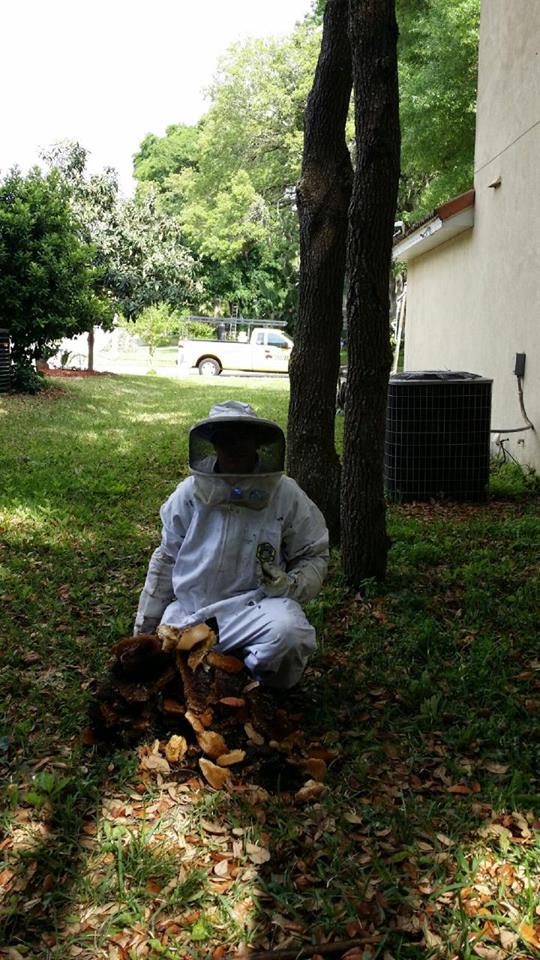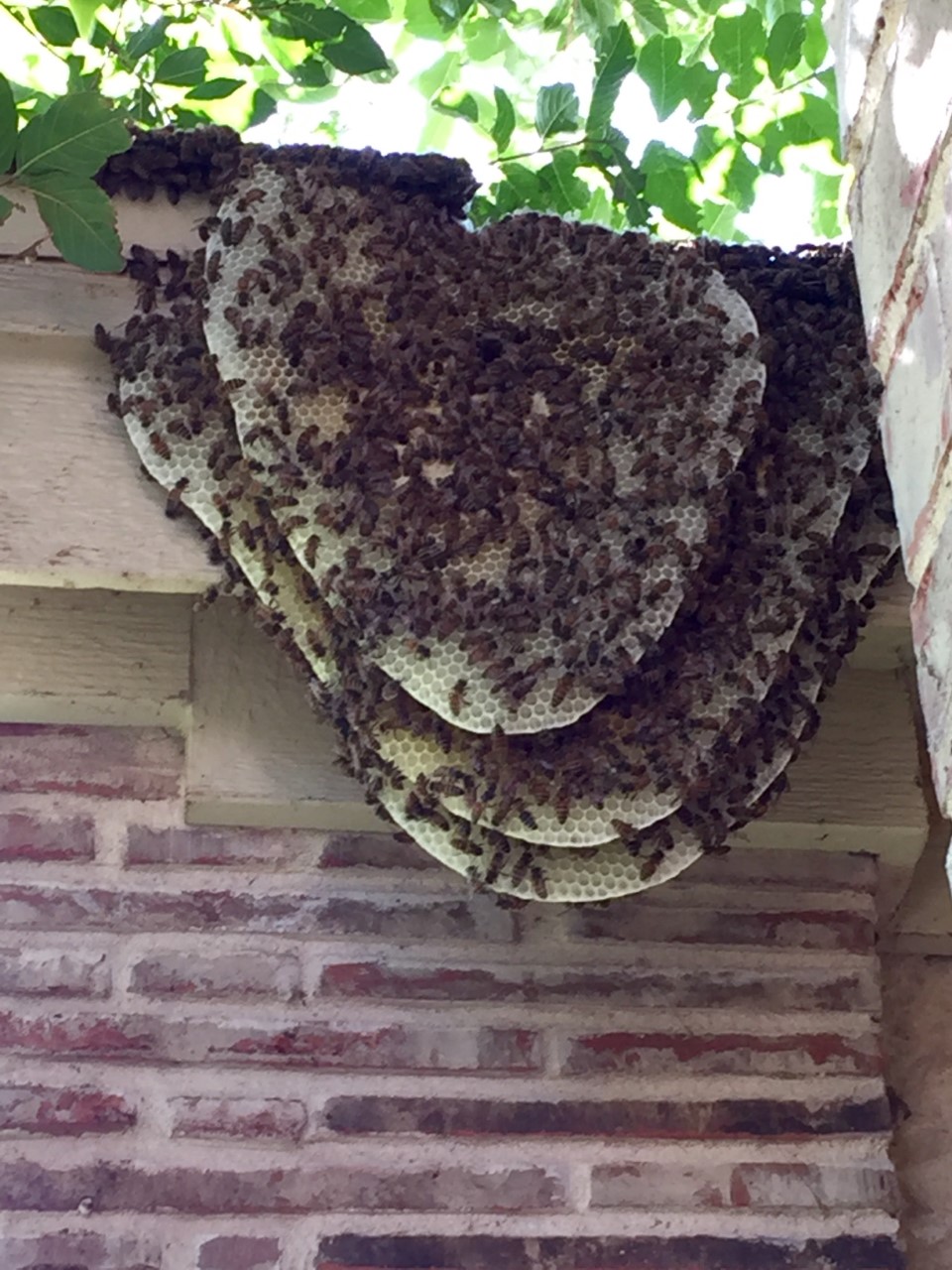
If you have stinging insects on your property, it is crucial to take the proper steps to ensure everyone is safe. One bee or wasp is usually not a big cause of concern, but a nest built near you should not be ignored.
Black and yellow stinging insects are often lumped together in the same group, but bees and wasps are actually very different. Identifying the nest is the first step to solving the stinging insect problem.
Beehives
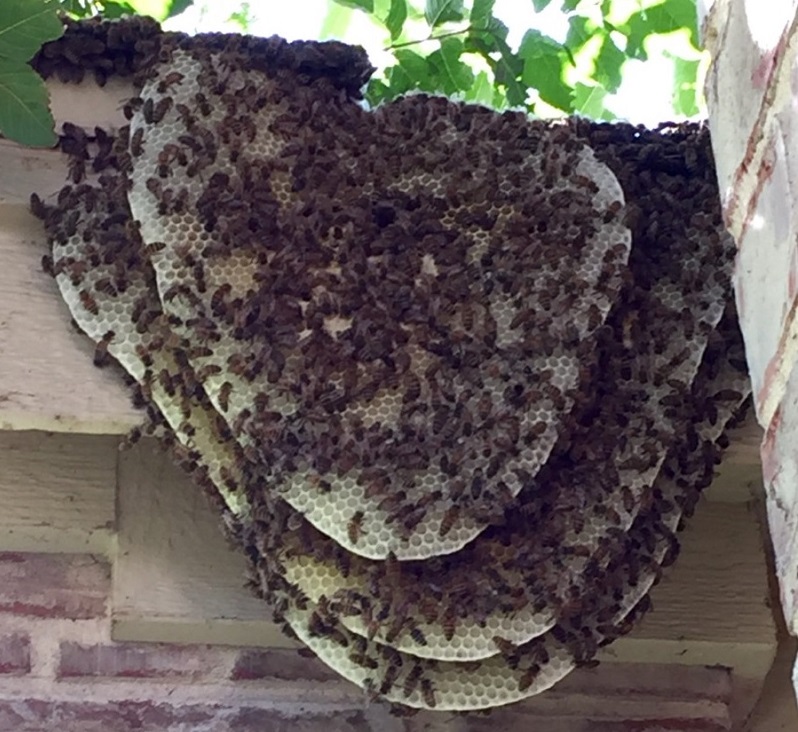
In nature, bees nest in trees and logs. When given access to homes, the pests construct hives in walls, attics, or crawlspaces. Honey bees have very large colonies up to 80,000! They swarm In the spring and can get into houses. They are not native insects or protected in any way.
Ground-dwelling bees search for large areas of exposed, dry, undisturbed soil, and find sparse lawns inviting places to dig tunnels and lay eggs.
Carpenter Bees
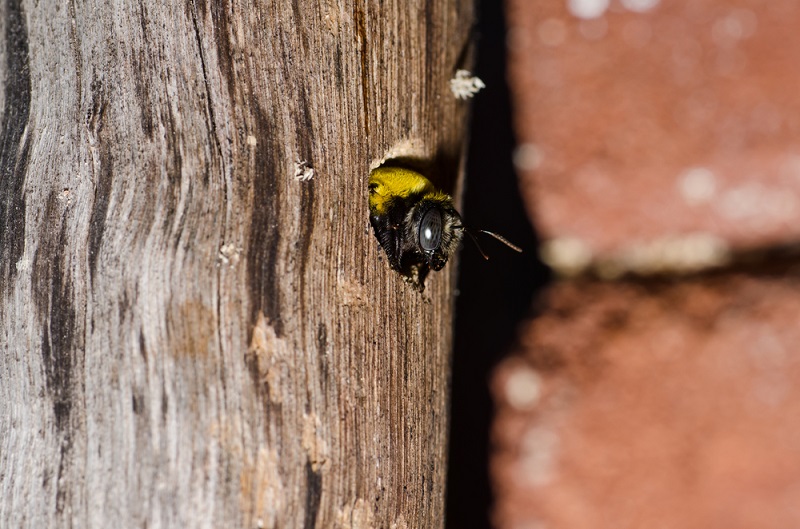
Carpenter bee nests can be an unwelcome addition to your home. Carpenter bee nests are created when female carpenter bees drill small cylindrical holes into wood, such as the wood trim around windows or doors of homes, to lay their eggs. Over time these holes can create structural damage to your home and even invite other pests as the nest grows.
Carpenter bees are very large but harmless. They look very similar to bumble bees, except they have a smooth, black abdomen, while the abdomen of a bumble bee is hairy with a yellow band.
Wasps Nests
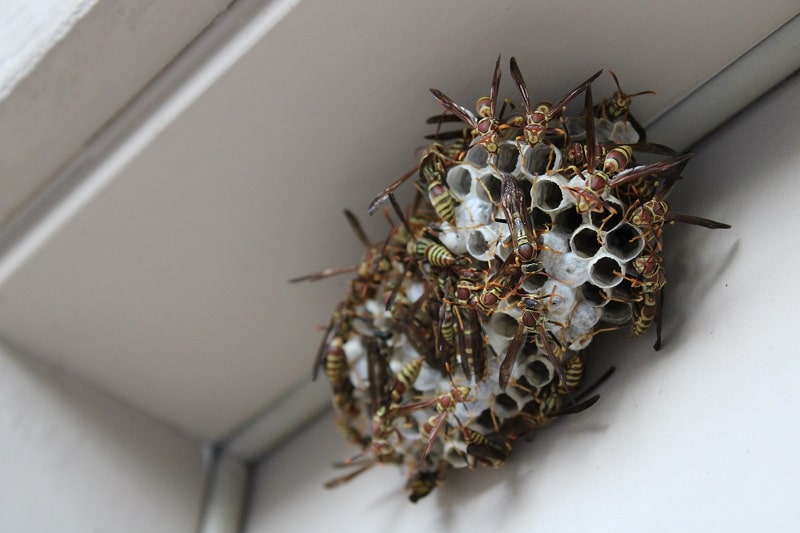
Social wasps like the paper wasps live in colonies. They build nests from chewed fibers to tree limbs, the eaves of your house, or under your porch. Paper wasps are small and slender, but their sting is painful. They make small paper nests that look like an umbrella.
Solitary wasps nest in the ground or in natural cavities. An exception, Mud Dauber Wasps elect to build their nests with mud, molded into place with their mandibles.
Hornets and Yellowjackets are types of wasps so their nests will look similar.
Hornet Nests
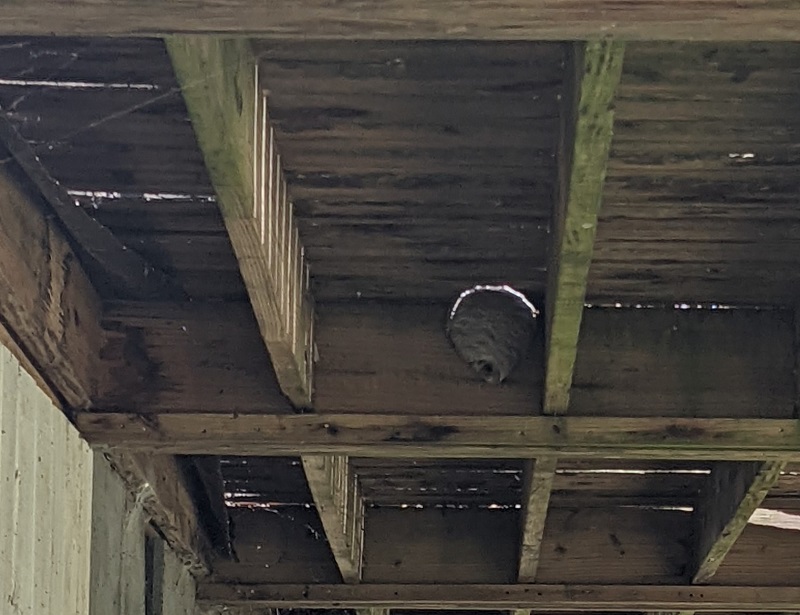
Hornets make a pulpy paper-like material out of leaves and wood to build their nests. These hives range from a few inches in diameter to the size of a basketball and are often located in trees, bushes, or hanging from the side of buildings. Colonies can get as large as 700 workers during late summer.
These pests often construct their nests in sheds, porches, or hanging from roof eaves. They’ll then enter homes through gaps in house siding or open windows and doors. Sometimes hornet colonies will even set up nests inside homes, such as in attics or wall voids.
Hornets are very aggressive and will violently defend their nests. As such, their presence on lawns and in parks is dangerous. Stings from these pests normally result in redness, swelling, and pain. However, some individuals may be allergic to hornet venom and have adverse, life-threatening reactions.
Yellow Jacket Nests
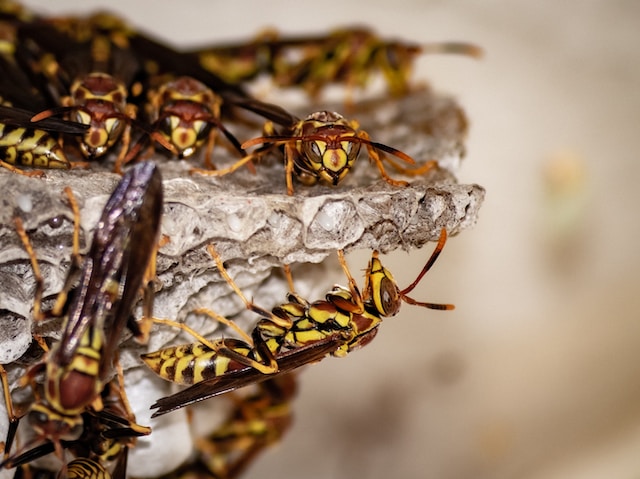
The yellow jacket nest consists of multiple stacked combs that are completely enclosed by a thin paper-like sheet. Yellow jackets are found throughout North America. Most species of yellow jackets use underground rodent burrows or other soil openings to house their nests; thus causing a problem for homeowners in their yards or if a nest is formed near the house underground. Parks, yards, wooded areas, and fields are some of their favorite habitats.
The yellow jacket is aggressive, and unlike most bees, it can sting multiple times. They will often mark supposed “intruders” with pheromones that attract other yellow jackets, who will administer stings of their own.
Professional Beehive and Wasp Nest Removal
Due to the health and safety risks involved, homeowners inexperienced with removing hives should not attempt to handle them alone. While effective pesticides are available, using them incorrectly on hives will only provoke the bees inside.
If you suspect you have a bee problem, do not hesitate to contact our experienced team at Critter Control. While many pest control companies are unwilling to handle bee infestations due to their complexity and the bees’ importance to the environment, we specialize in safe bee removal and effective pest control for bees. Once we remove the infestation, we’ll even repair any structural damage left behind to restore your home’s integrity.
Searching for bee removal company near you? Critter Control can get rid of bee nests and bee problems with effective bee control and bee removal solutions. Contact us to learn more about professional bee removal costs for carpenter bees, bumblebees, and similar types of bees.
Contact Form
Get them out.
Keep them out.®
Experiencing a wildlife or pest issue? We can help! Complete this form and your local Critter Control® office will contact you to assist.
